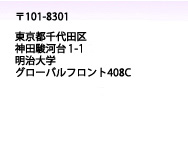This interdisciplinary project attempts to establish the "ancient Japanese studies" focusing on the process toward the civilization in the Japanese archipelago. By "ancient," we mean time periods from Yayoi (ca. sixth century B.C. to middle third century A.D.) to Heian (794-1185) Periods. Traditionally in Japan, researches into these time periods have been compartmentalized into historic sources, literary works, artifacts and oral traditions according to the natures of materials upon which researches are based. While this compartmentalization has allowed scholars to conduct analyses specific to individual materials thereby producing finer and more detailed results of researches, the compartmentalization has prevented interdisciplinary researches, resulting in fragmentation of researches. For instance, specialists of history, archaeology, and literature conduct investigations independently from one another without cooperation into a fudoki [provincial gazetteer] of the same region. Consequently, the results of their researches into or conclusions on the same subject matter may be contradictory from one another. Yet, this reality has been accepted simply because "disciplines are different."
We do admit and respect a wide variety in approaches resulting from the differences in disciplines or academic fields. Nevertheless, the compartmentalization has kept it difficult to compare and/or correlate the results of researches produced by scholars of different disciplines. This has prevented the description and discussion of a multi-faceted reconstruction of the ancient society. For this reason, we have established the Meiji University Research Institute for Japanese Ancient Studies, and conducted an interdisciplinary research titled as the "Interdisciplinary and Integrated Studies of Writing, Images, and Oral Traditions in Ancient Japanese Cultures" from 2004 to 2008. The major feature of this project was the addition of the study of ancient Japanese literature to the couple of history and archaeology whose cooperation was already in practice. This allowed us to conduct more integrated and interdisciplinary researches into ancient cultures of Japan. The present project, then, is meant to further enhance the interdisciplinary and integrated aspects of the studies of ancient Japan in order to meet contemporary societal expectations for understanding about ancient society.
In order to achieve the goal, we have re-defined the concept of "resources" to incorporate various different aspects of culture, including literary arts. This concept is, we hope, designed to bridge the three fields of history, archaeology, and literature. Specifically, these three fields are tied as follows: we investigate the materials production from natural "resources" and the social organization and structure that allowed the production, which is reflected in the degree of cultural advances, including writing. This degree of cultural advances appears as a resource for the next generation. We have already adopted such approaches in the previous project (2004-08).
While utilizing the concept of resources, the concept of "center and periphery" is important because it emphasizes the two opposite directions of interactions between the center and periphery. This approach clarifies the historical foundations of both the center and periphery. Specifically, we intend to conduct comparative analyses of the histories of peripheral regions of the Ryukyu Islands and southern Kyushu and of northeastern mainland and Hokkaido.
Furthermore, we are actively engaged in research collaborations with scholars in China, Korea and the United States. We internationally present the results of our researches. Because we have strengthened the graduate education owing to the Graduate Program for Interdisciplinary Specialists in Ancient Studies of Japan, we intend to strengthen our research in order to establish the global center for studies of ancient Japan.
|



